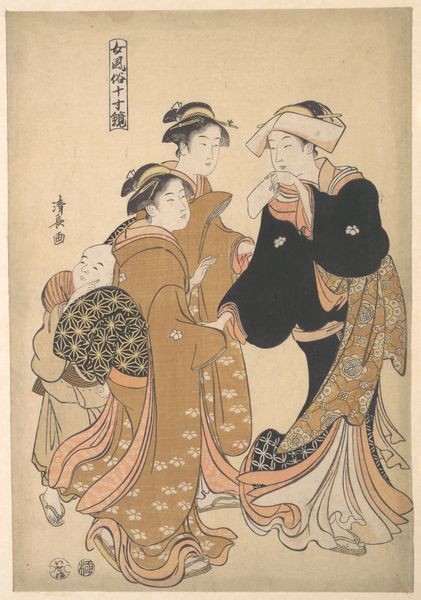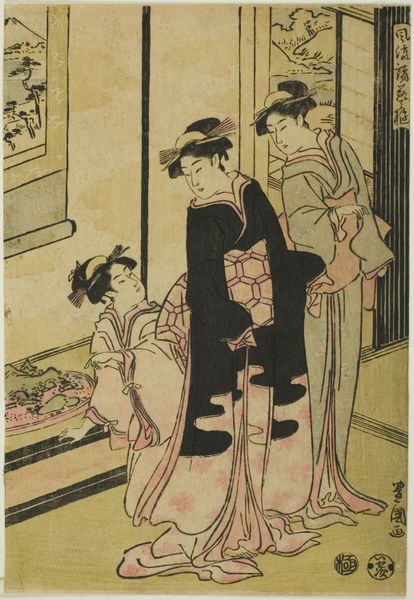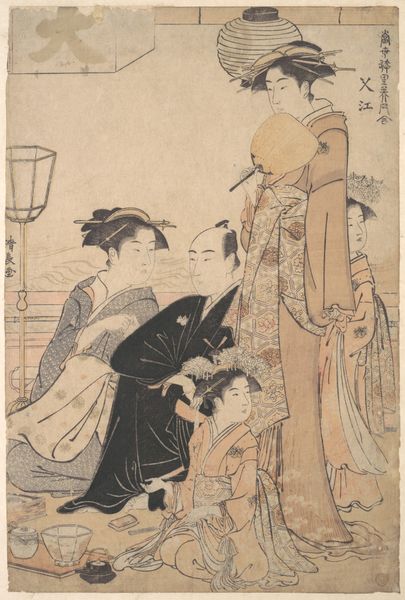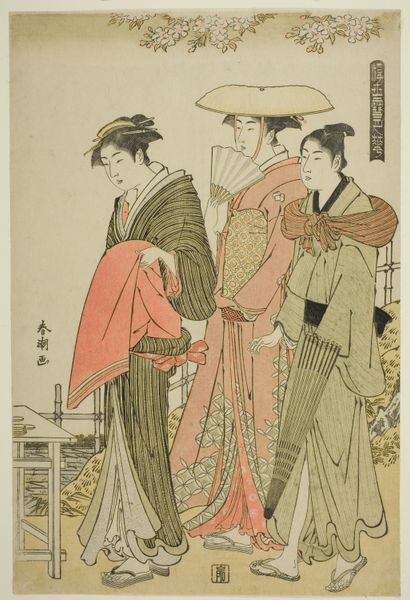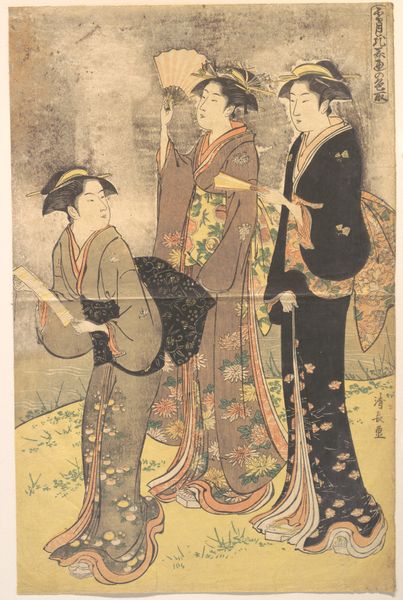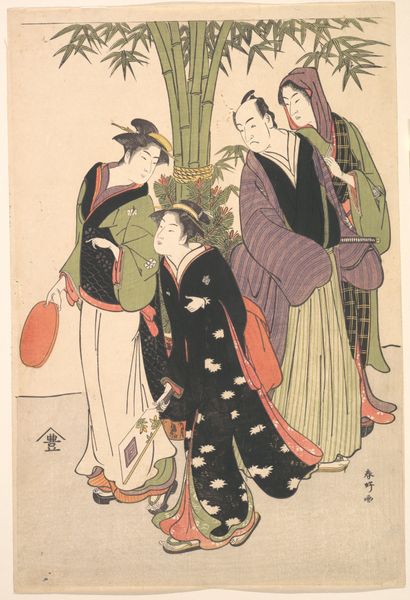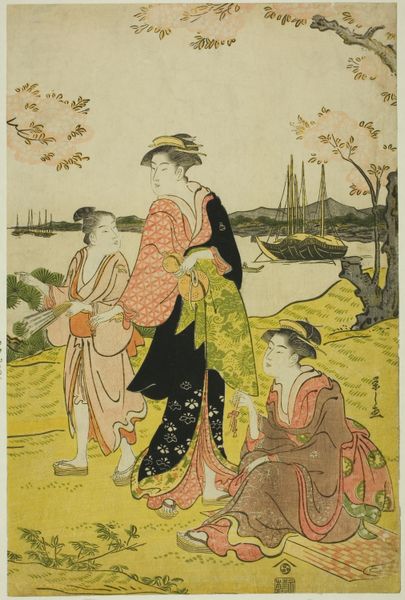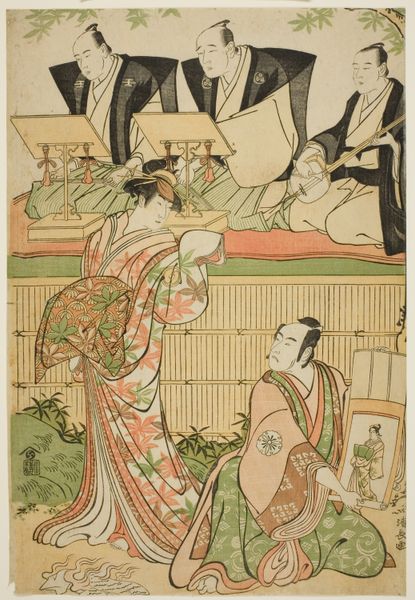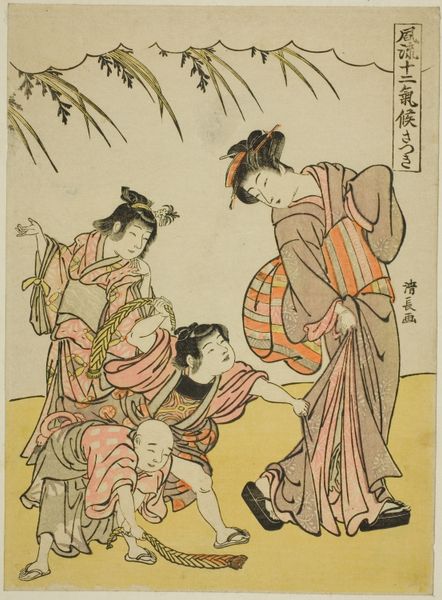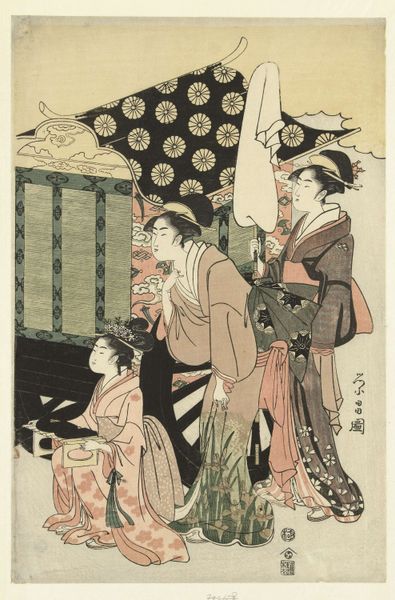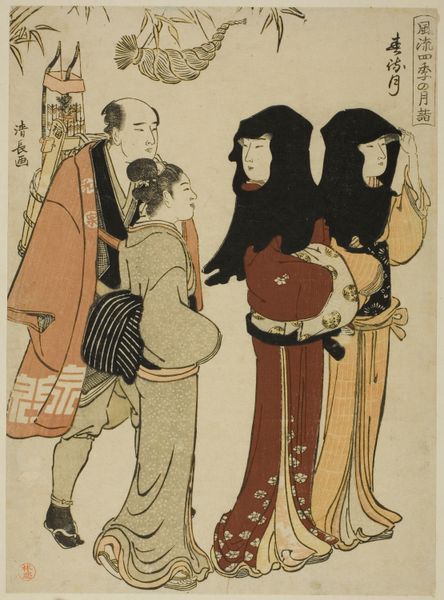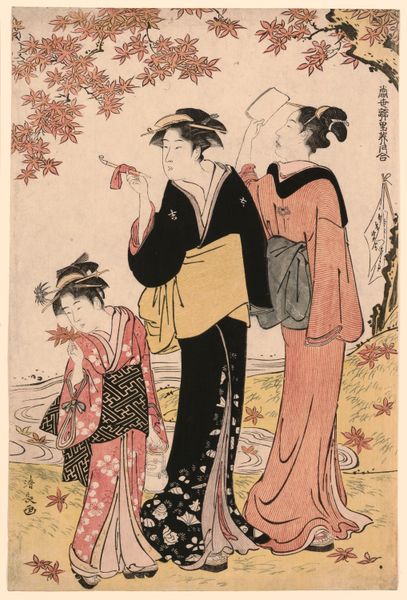
Lovers Parting in the Morning c. 1765 - 1770
0:00
0:00
#
portrait
# print
#
asian-art
#
ukiyo-e
#
genre-painting
Dimensions: 11 3/8 × 8 1/2 in.
Copyright: Public Domain
Editor: This lovely print, titled "Lovers Parting in the Morning," dates to around 1765-1770 and is by Suzuki Harunobu. It's a Japanese woodblock print, and the soft colors give it such a tender feeling. What strikes me most is the ambiguity of the scene – is this truly a reluctant goodbye? What's your take on this, looking at it through a historical lens? Curator: The ambiguity is precisely where the historical richness lies. Harunobu was working in a period where societal rules, especially surrounding sexuality and relationships, were simultaneously rigid and subverted. Ukiyo-e prints like this one became a crucial outlet. Editor: So, it’s a peek into forbidden lives? Curator: More than that. Consider who was consuming these images. It was the rising merchant class, eager to emulate aristocratic tastes but also to challenge the established order. Prints like this one, depicting everyday life with a hint of scandal or romance, allowed them to imagine themselves outside of their prescribed roles. The print’s very existence, its wide circulation, speaks to shifting social dynamics and desires. Notice the figures – they are not overtly sexualized, yet the tension is palpable. This wasn’t just about lust, but about portraying human emotion in a rapidly changing urban landscape. Where do you see evidence of those rapid social changes? Editor: I suppose in the details: their clothing seems very deliberate. And those children accompanying the couple... It doesn’t look furtive so much as… resigned? Like a well-choreographed ritual. Curator: Exactly! Think about the power structures implied. Are they truly lovers parting? Or a lord visiting a courtesan, observed by her attendants? Harunobu cleverly uses suggestion rather than explicit statement to engage his audience and make them complicit in interpreting this social drama. Editor: That's fascinating – it makes me see beyond just a pretty picture and appreciate the print as a social commentary. I had no idea a simple print could reveal so much! Curator: Indeed. The power of art lies often in what it *doesn't* say. This piece makes one reflect about public presentation versus lived experience.
Comments
No comments
Be the first to comment and join the conversation on the ultimate creative platform.
